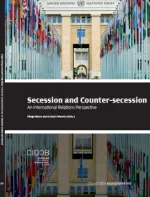The four pillars of a counter-secession foreign policy:Lessons from Cyprus

We live at a time when the question of secession is at the forefront of international attention. As well as the current focus on Catalonia, the subject of Kurdish independence is also in the news. Meanwhile, the question of Scottish independence remains firmly on the agenda, despite the referendum that took place in 2014. Elsewhere around the world, there are anywhere up to a hundred other groups and territories seeking statehood.
Although significant attention is paid to the ways in which secessionist territories pursue their ambitions for independence, there has been rather less attention given to the way states facing an act of unilateral secession respond to such challenges. In many ways, the small eastern Mediterranean island of Cyprus has set the standard for states facing a secessionist threat. Over the course of the last thirty years, the Cypriot government has been engaged in a relentless – and, it must be said, often ruthless – battle to prevent the “Turkish Republic of Northern Cyprus (TNRC)” (or Northern Cyprus, as it is more commonly known), from gaining international recognition. By most benchmarks, these efforts have been extremely successful. While some international measures have been taken to ease the isolation of the Turkish Cypriots, especially after the failed reunification attempt in 2004, Northern Cyprus still has relatively little interaction with the wider world. In analysing the ways the Cypriot government has responded to the TRNC, it becomes clear that any successful countersecession strategy is based on four separate but interlocking strands.